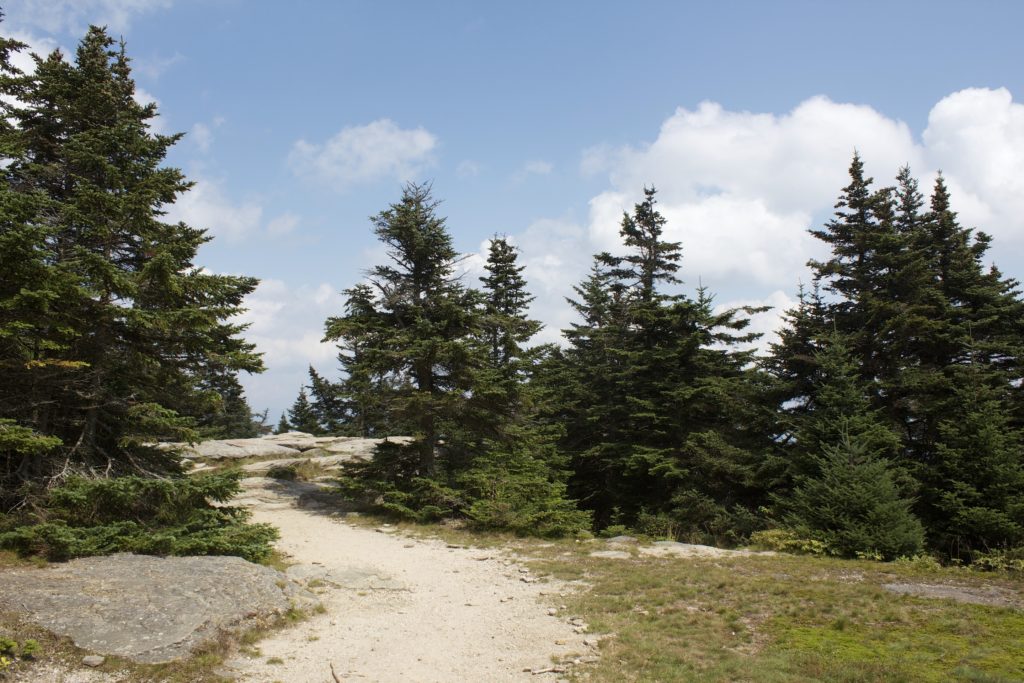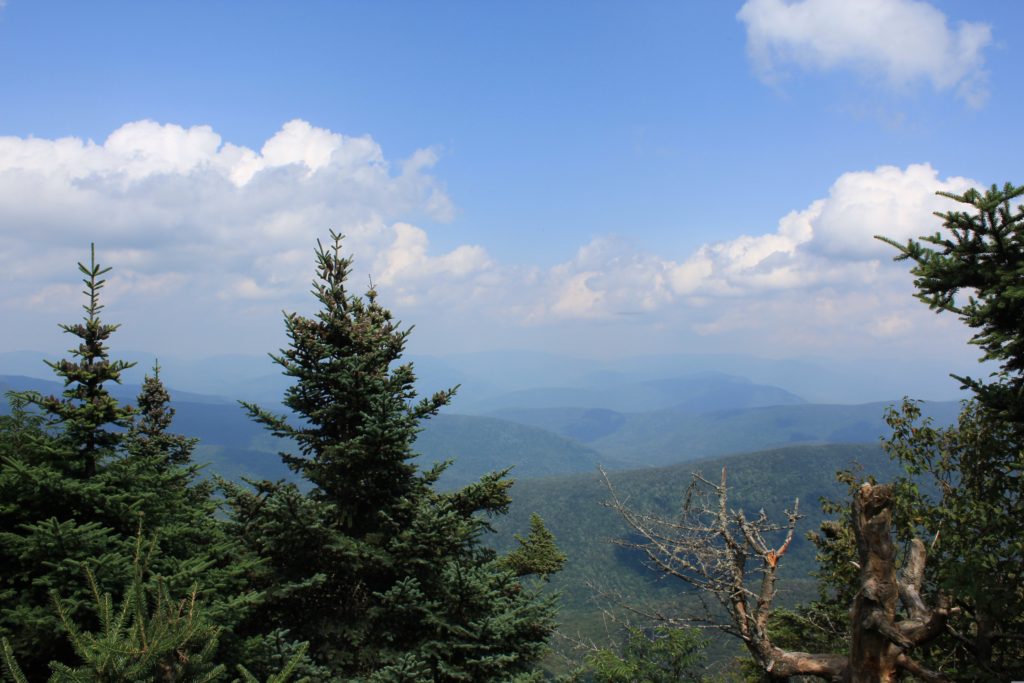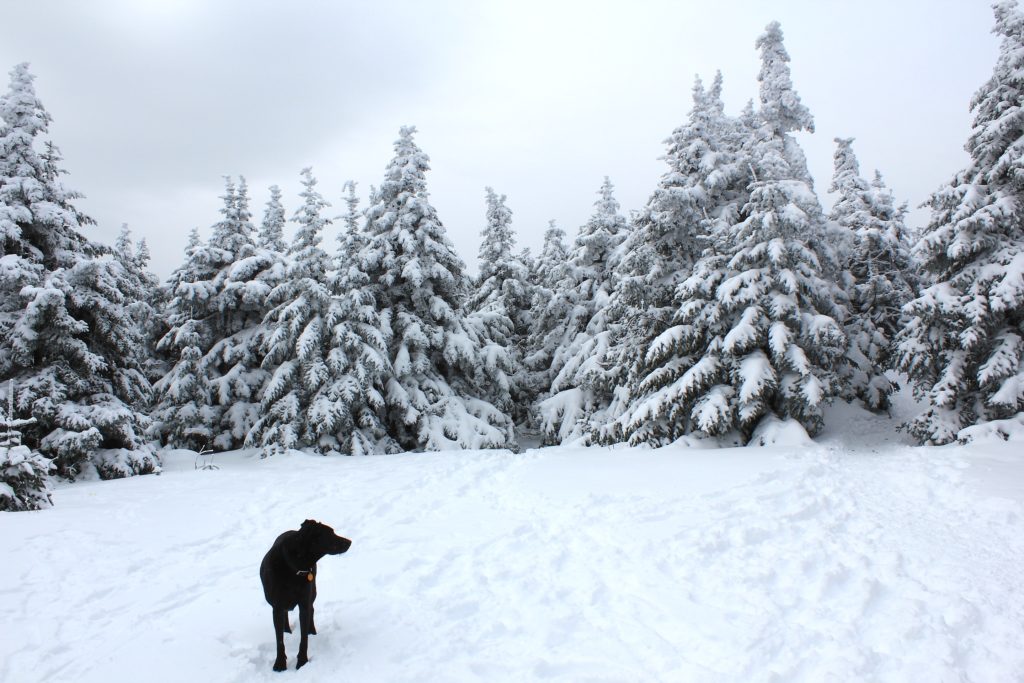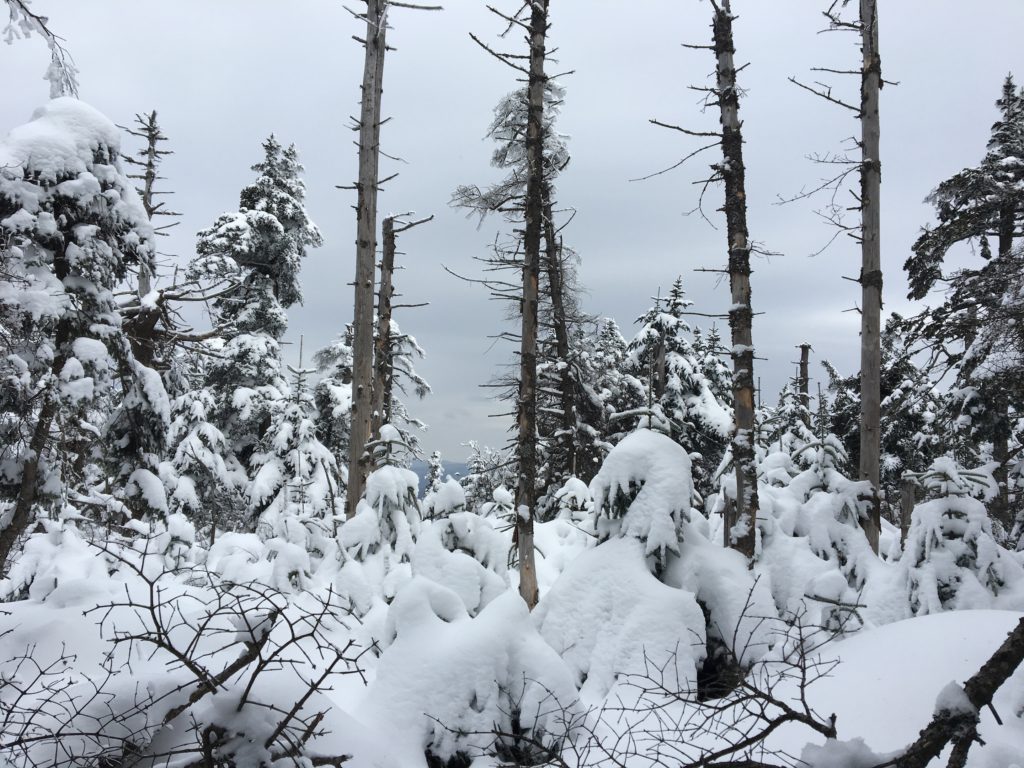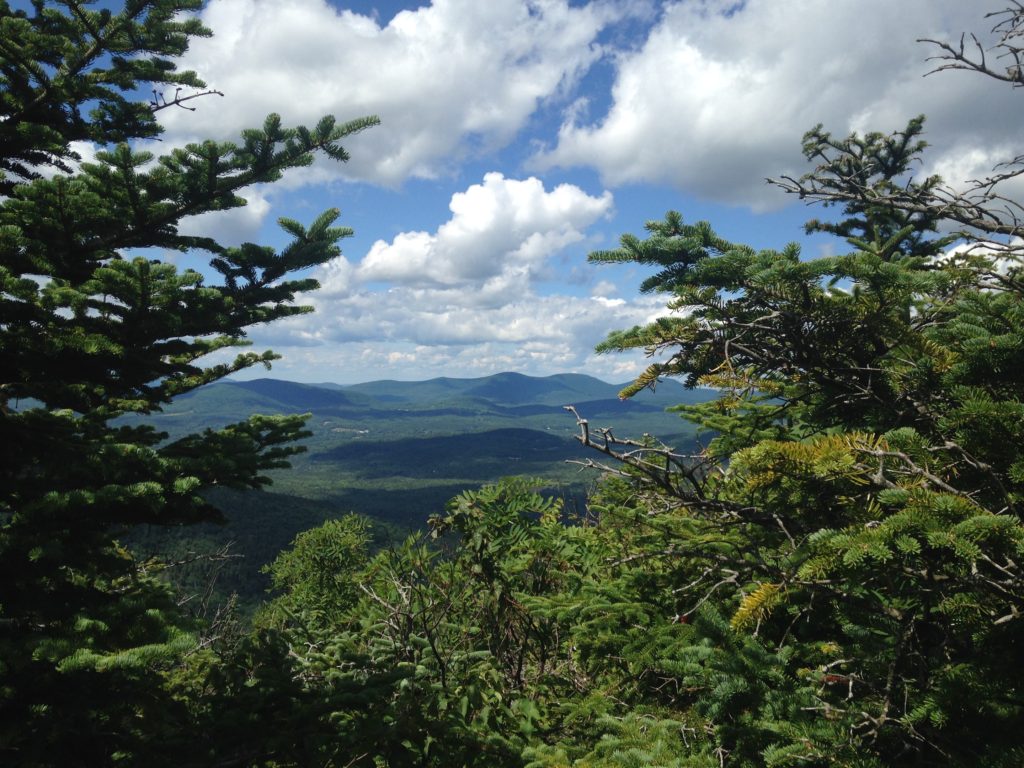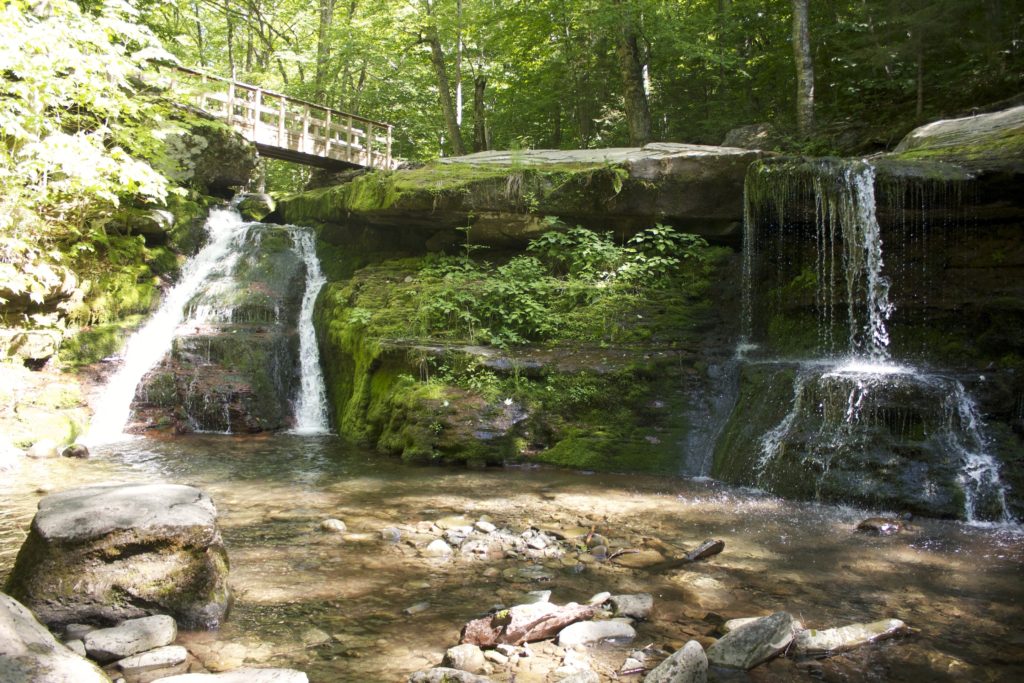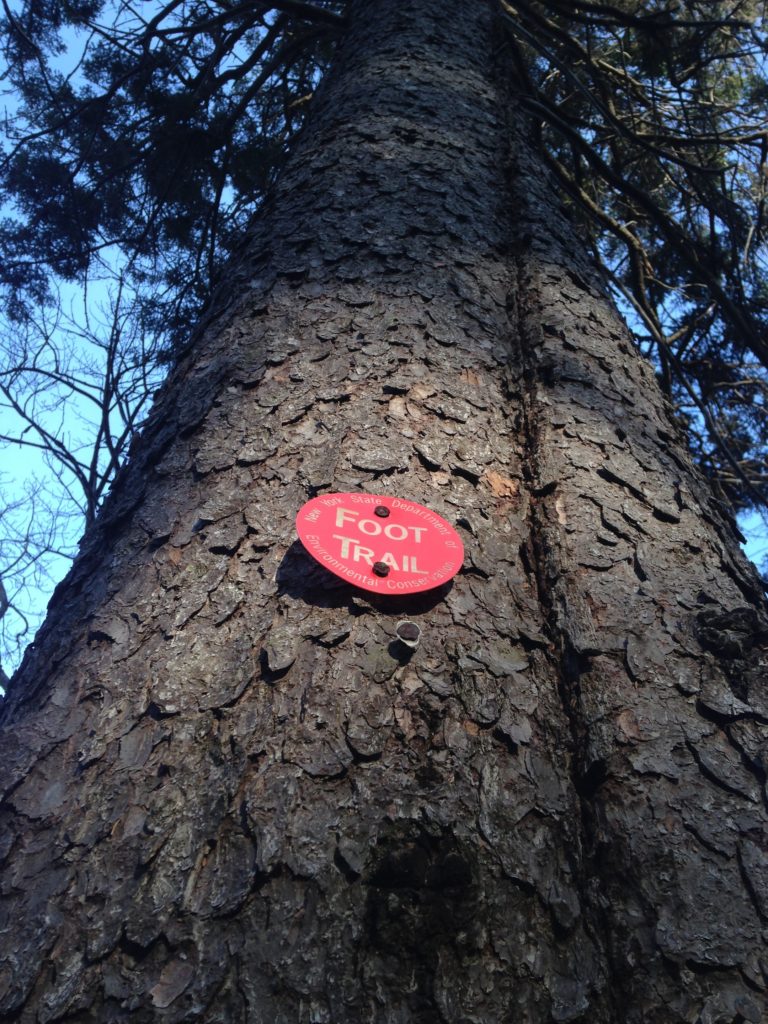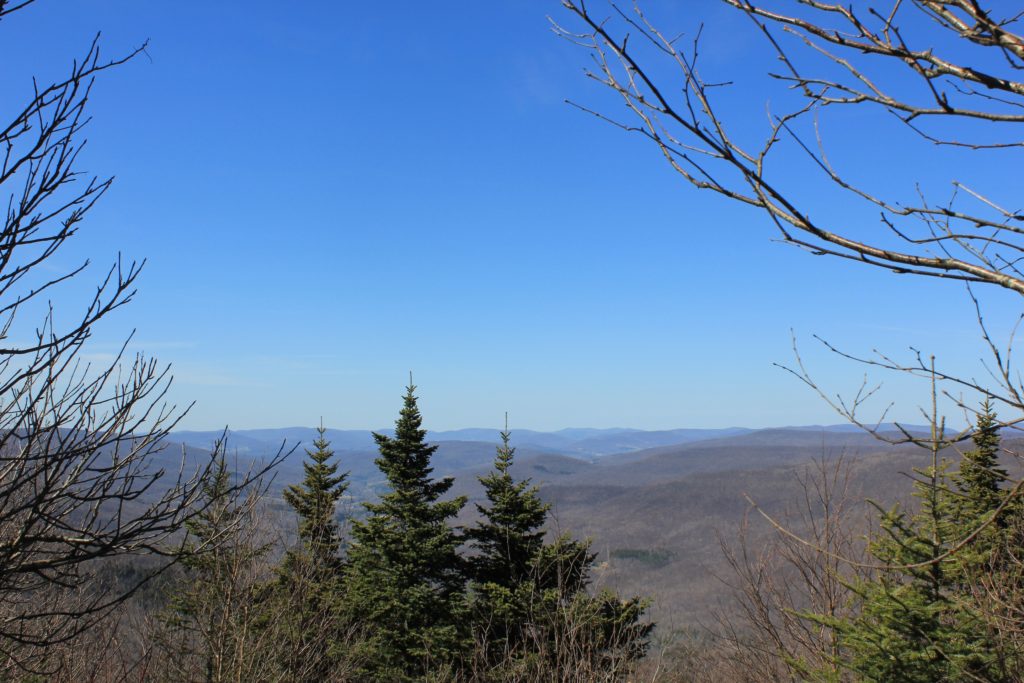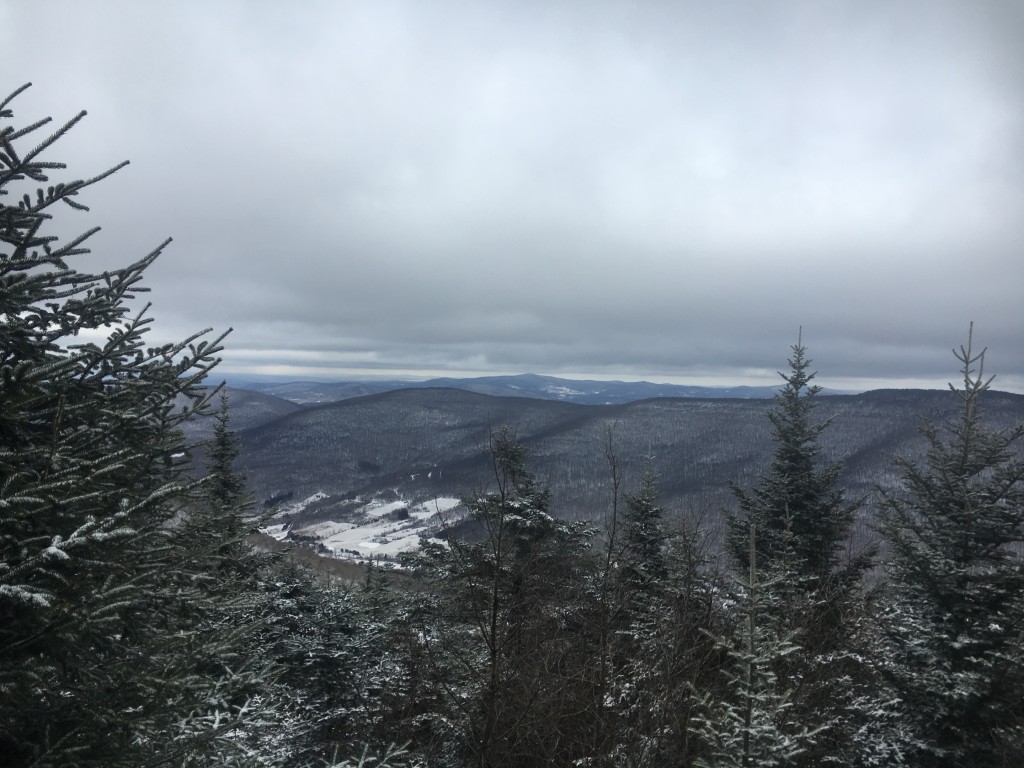Most of the trail to Slide, almost to the top from the Slide Parking Area, is like rubble, as if an ancient giant smashed the top with Thor’s hammer and a plethora of rocks tumbled down the side and piled up in the dirt below. You might appreciate the step aerobics-type exercise on the way up, but the descent can be precarious. Hiking poles are a great help on this type of trail. The hiker needs to be as nimble as a mountain goat in order to make good time, or take some extra time to make frequent stops on the way down to sit and ruminate amidst the ancient geography. The Catskills were once – millions of years ago – on the seabed in the Bahamas. You can find marine fossils, pebbles and small pieces of harder stone embedded in the rock. This is a good hike for dogs, because there are plenty of small, running streams to provide refreshment. There are some stone steps built into the rubble at various points to ease passage.
Slide is easier to navigate on foot in the winter when it’s covered in a thick layer of ice or snow and you can glide over the top in spikes or snowshoes, but the summer reveals its fascinating character. This is no ordinary hike and Slide Mountain Wilderness was a favorite of local legend, essayist and naturalist John Burroughs, a protégé of Walt Whitman. There is a plaque dedicated to Burroughs at the summit, on a rock under which the author frequently slept. He wrote: “Here the works of man dwindle, in the heart of the southern Catskills”. Be careful not to miss the plaque if you’re finishing your hike at the summit of Slide Mountain. Continue reading
